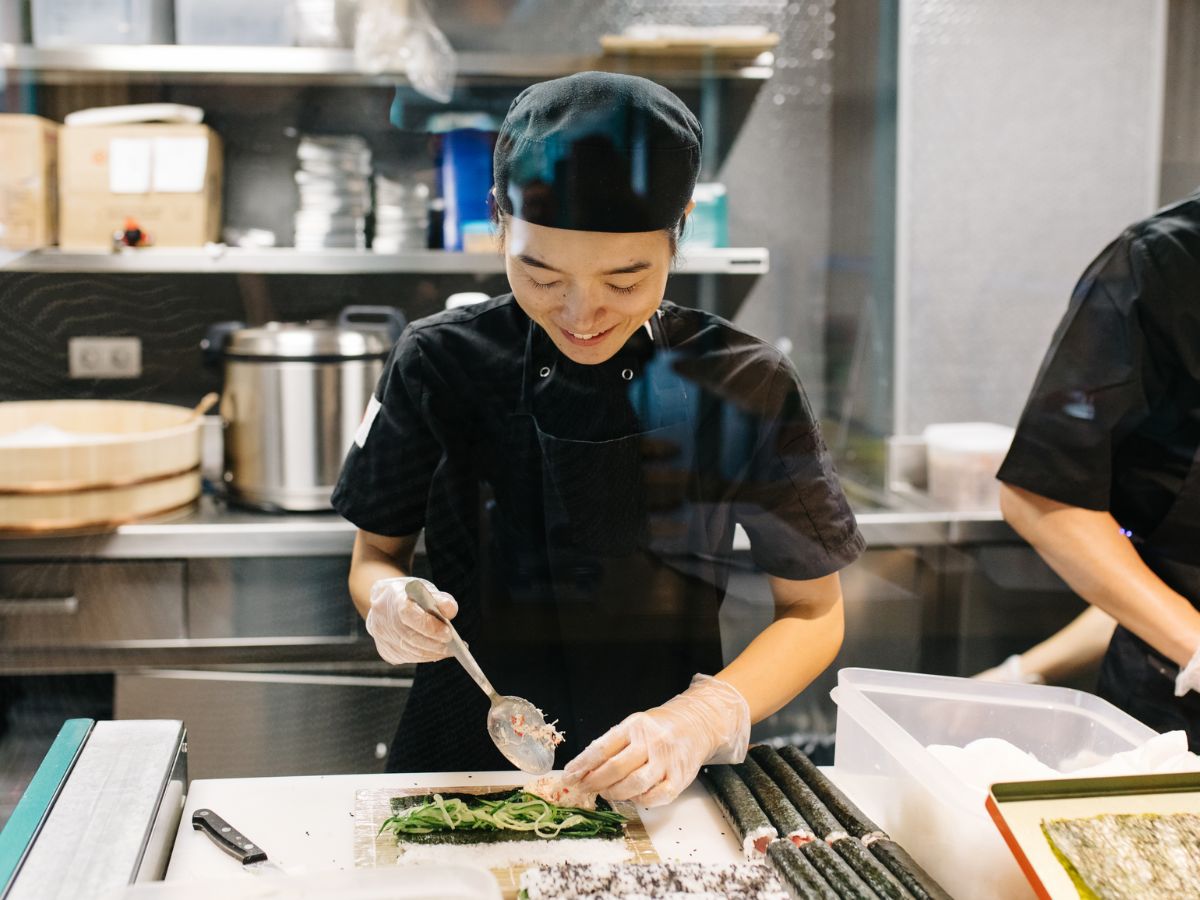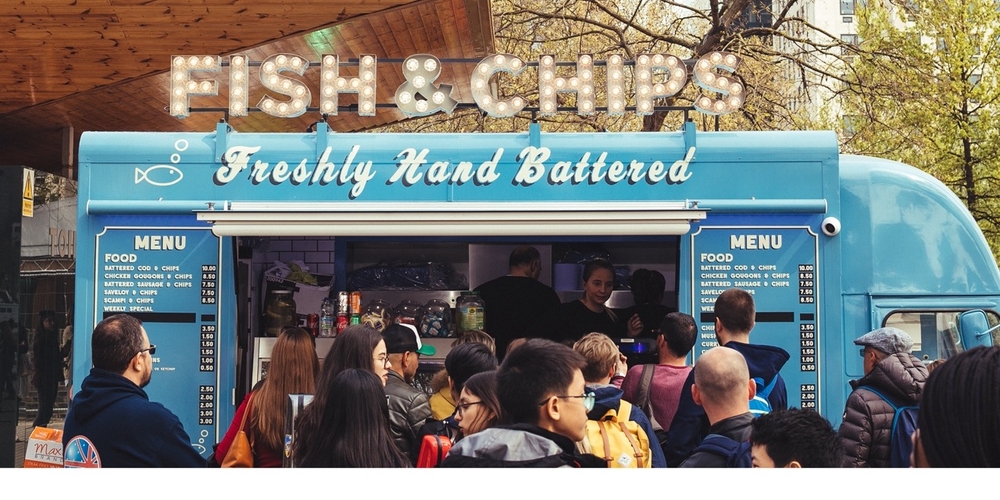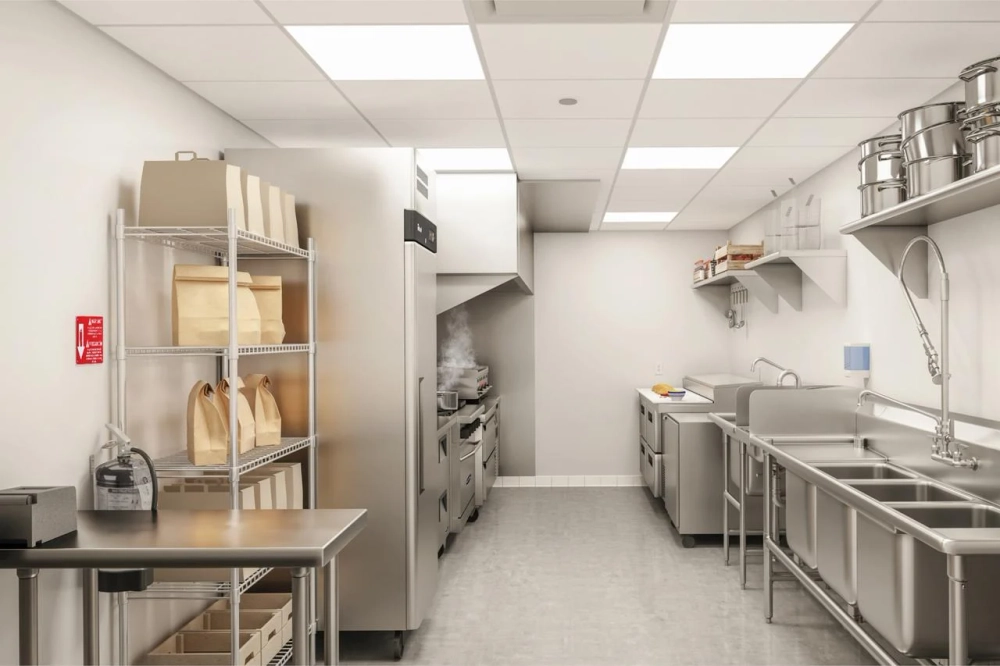Table of Contents

How to start a food business?
Many people dream of one day opening up their own restaurant or food delivery service business. They love the idea of running a successful eatery—one that has the town buzzing and always has a line out the door.
But when the rubber hits the road, many would-be restaurateurs get smacked in the face by reality when they discover that starting and running a successful business goes far beyond the menu. They focus on the sizzle but forget about the steak.
This lack of preparedness often proves costly. And, in a low-margin business, it’s no wonder why one in three restaurants shutter within the first year of operation.
Want to avoid that all too common fate? Here’s how to start a food business and position it for long-term success.
Step 1: Outline the concept
Do you have a vision in mind for your dream restaurant?
Before you sauté your first onion or toss your first pizza, you need to establish and then flesh out your food business concept. This will be your restaurant’s identity—the soul of the culinary adventure.
Essentially, this boils down to one question: what secret ingredient will set you apart in the marketplace?
Sure, you’ll need fantastic food. That’s a given. But let’s face it, good food is merely the starting point, not the differentiator.
If your restaurant will open in a small town, your unique proposition might be as simple as introducing a new international cuisine. However, in a big city with a vibrant gastronomical scene, you’ll need more than just an exotic menu to turn heads.
Are you envisioning a fine dining establishment where each dish is a work of art? Or perhaps you’re contemplating a delivery-centric model, sidestepping the traditional brick-and-mortar setup.
Whatever your concept, remember: it will serve as the compass for every other decision you make. It influences:
- The menu
- Your staff
- The levels of service
- The decor
- The ambiance
- The restaurant’s interior design
- Your restaurant branding
The concept is not just a part of your restaurant. It is your restaurant. Prepare with care.
Step 2: Build out the business plan
A successful restaurant is built on the sturdy foundations of the business plan. This is the restaurant’s blueprint. It will inform every aspect of running the business from the cooking to the marketing.
But that plan is only helpful as the information contained therein. A well-crafted plan will act as a living document that outlines your plans, unique selling proposition, and potential market fit. With proper planning and foresight, it can function as a roadmap that informs future actions and helps you obtain financing.
Before you begin building that out, you should first simmer on several questions like:
- What type of food will I be serving?
- What is the diner experience I want to create?
- How will I source ingredients?
- What are the target demographics for my patrons?
- Who are my competitors in the marketplace?
- What are my unique value props?
- How do I plan to spread the word about my restaurant?
- How will I finance the venture?
Once you have begun to sketch out this framework, you can start creating your official business plan. While the specific sections may change from one concept to another, the general framework should look as follows:
- An executive summary: Provides a short, page-long summary designed to “capture the reader’s attention and briefly explain your business, the problem you are solving, the target audience, and key financial information.”
- Description of your restaurant: Provides investors with relevant information about the company’s reason for existing, unique value proposition, and operational overview.
- Market analysis: This helps you understand the industry, competition, and target consumer by conducting industry analysis, target market analysis, and competitive analysis.
- Menu: This is unique to restaurants, but you should provide at least a rough draft of the head chef’s planned menu.
- Employees and management team: Details the company structure, the management team involved, and plans for managing back and front-of-house staff.�
- Financial analysis: Projects estimated costs, revenue, and financial goals.
- Marketing plan: Details the digital and conventional marketing strategies you will deploy to build a buzz and drive engagement.
Step 3: Acquire funding
You may lack the capital to cover the costs of opening a restaurant out of pocket, at least without some form of financial assistance. Fortunately, there are several ways to secure the necessary financing to establish a restaurant, including:
- Traditional commercial loan: A lump sum of money borrowed from a financial institution, like a bank or credit union, to be repaid with interest.
- Business line of credit: A form of flexible financing where the borrower is granted access to a line of credit from an institutional lender that can be pulled upon as necessary.
- Small business loan: The Small Business Administration (SBA) offers a loan program designed to provide small businesses with financing. In case of a default, the SBA offers to repay 85% of any loss.
- Private investors: Angel investors, venture capitalists, or even personal acquaintances may invest in the business in exchange for an equity stake.
Step 4: Select your legal structure
Every for-profit business needs to be registered at the local, state, and federal levels for both tax and liability purposes. In most cases, you will need to pay a $300 registration fee and fill out and send in the relevant paperwork.
Most restaurants will select one of three legal structures:
- Sole proprietorship: The simplest form of business entity, a sole proprietorship is owned and operated by a single individual, with no legal distinction made between the owner and the business.
- Partnership: A partnership is a business owned by two or more people. All partners share in the business’s profits and losses. With a general partnership, each partner has unlimited liability, whereas a limited partnership limits liability to the investment.
- Limited liability company (LLC): LLC combines the limited liability of a corporation with the pass-through taxation incentives of a partnership or sole proprietorship. This is the most popular structure for any new restaurant.
Step 5: Purchase restaurant equipment
To cook the food, you’ll need the kitchen equipment to cook it with.
If you’re purchasing an already established restaurant, you can skip this step. But if you’re still in the initial stages of learning how to start a restaurant, you should start preparing your shopping list. What’s on it will depend on various factors, including your culinary style, projected demand, operating budget, and local regulations.
That said, common types of restaurant equipment include:
- Ovens
- Ranges
- Ventilation
- Fridges and freezers
- Specialty equipment
- Cooking equipment
- Safety equipment
- Mixers
- Storage containers
Step 6: Obtain your licenses & permits
Depending on the type of restaurant you plan to operate and where it will be located, you will inevitably need to obtain various licenses and permits, including:
- EIN–An employee identification number (EIN): essentially functions as a business social security number for tax purposes. You can apply for free online by visiting the IRS website.
- Certificate of occupancy: If you plan on running a commercial kitchen, you’ll need to obtain a CoO via your local building department or department of housing. This document outlines the properties classification and verifies that the structure is up to code and fit for occupancy.
- Food service license: Practically every restaurant will be required by their state to obtain a food service license, which generally involves a facilities audit.
- Food handling permit: You will also be required to complete a food handling license by demonstrating that your facility meets regulations for food storage, sanitation, protection, and preparation.
- Liquor license: Plan on selling alcohol at your establishment? If so, you’ll need to obtain a restaurant license, beer and wine license, or tavern license.
Step 7: Consider a ghost kitchen
Would you prefer to focus purely on your culinary creations while keeping the startup costs lean?
If so, then traditional brick-and-mortar locations might not be the ideal business structure, with their operational complexities—leases, permits, high operating costs—and the seemingly endless list of regulatory hoops to jump through.
So, what’s the alternative? Enter the ghost kitchen: a revolutionary concept that’s reshaping the food business landscape.
A ghost kitchen, also known as a virtual kitchen, is a professional food preparation and cooking facility set up for delivery-only meals. It’s the back-of-house kitchen operations and delivery infrastructure without the dining room.
Put simply, ghost kitchens make it fast and easy to get a food business up and running. It only takes weeks (not months or years) to get started, and you can do so for a fraction of the cost.
Jumpstart your food business with CloudKitchens
Starting a restaurant is often a lengthy and costly process. But with CloudKitchens your dreams become much more feasible and financially lucrative.
At CloudKitchens, we can help you set up a fully operational and permitted kitchen in as little as 4 weeks. Each space comes with:
- The 200 sqft commercial kitchen space
- Operational and services support
- Foundational kitchen equipment
- Utilities and maintenance
Need a facility for your upcoming expansion? We have locations across the US from ghost kitchens in Austin to commercial kitchens in Los Angeles. With our help, you can reduce the time, headache, and investment to start your food business. Interested in what the future of food services looks like? Take a tour of your future ghost kitchen today.
Explore ghost kitchen locations across the US:
- Ghost kitchens in San Francisco
- Ghost kitchens in LA
- Ghost kitchens in NYC
- Ghost Kitchens in Toronto
- Ghost Kitchens in Atlanta
- Ghost Kitchens in Dallas
- Ghost Kitchens in Chicago
- Ghost Kitchens in Denver
- Ghost Kitchens in Miami
| DISCLAIMER: This information is provided for general informational purposes only and the content does not constitute an endorsement. CloudKitchens does not warrant the accuracy or completeness of any information, text, images/graphics, links, or other content contained within the blog content. We recommend that you consult with financial, legal, and business professionals for advice specific to your situation. |
Sources:
Bank of America. The State of the Restaurant Industry. https://business.bofa.com/content/dam/flagship/gcb/restaurant-industry-report-2022/state-of-restaurant-industry-2022.pdf
Business News Daily. 5 Steps for Writing an Executive Summary. https://www.businessnewsdaily.com/15814-write-an-executive-summary.html
SBA. SBA Loan Guarantee Program. https://www.sba.gov/sites/default/files/SDOLoanFactSheet_Oct_2011.pdf
IRS. Business Structures. https://www.irs.gov/businesses/small-businesses-self-employed/business-structures
Please note that this article is for informational purposes only and is not intended as tax, legal, HR, accounting, or other professional advice.
More insights & stories


